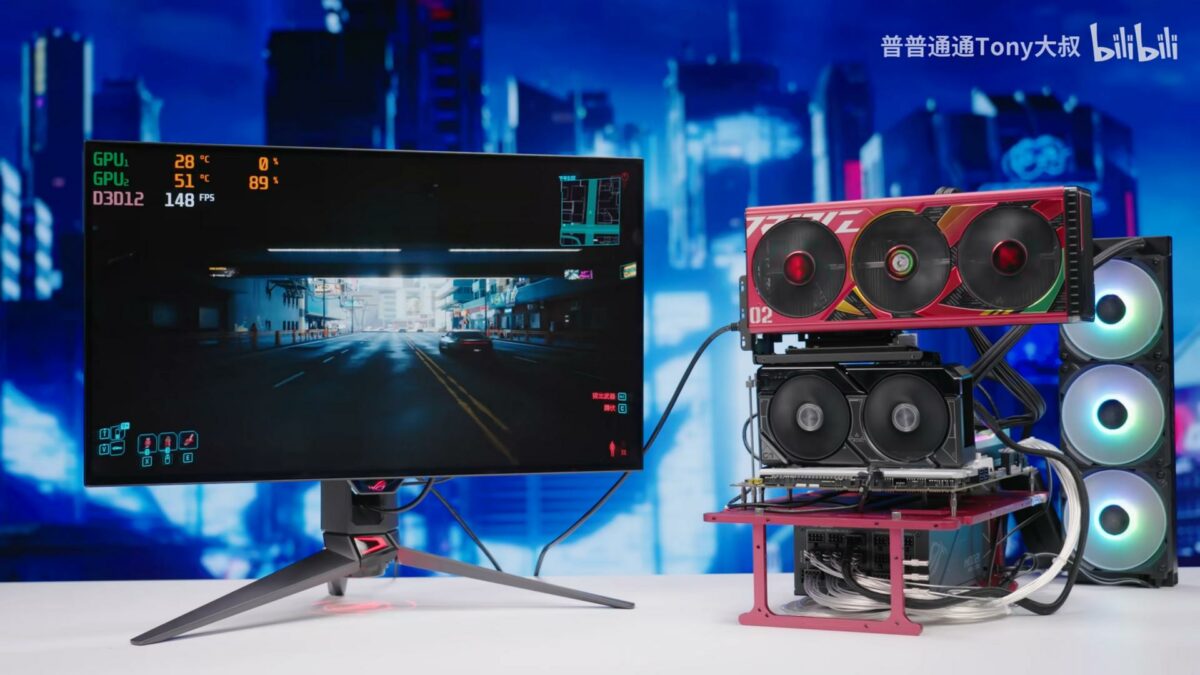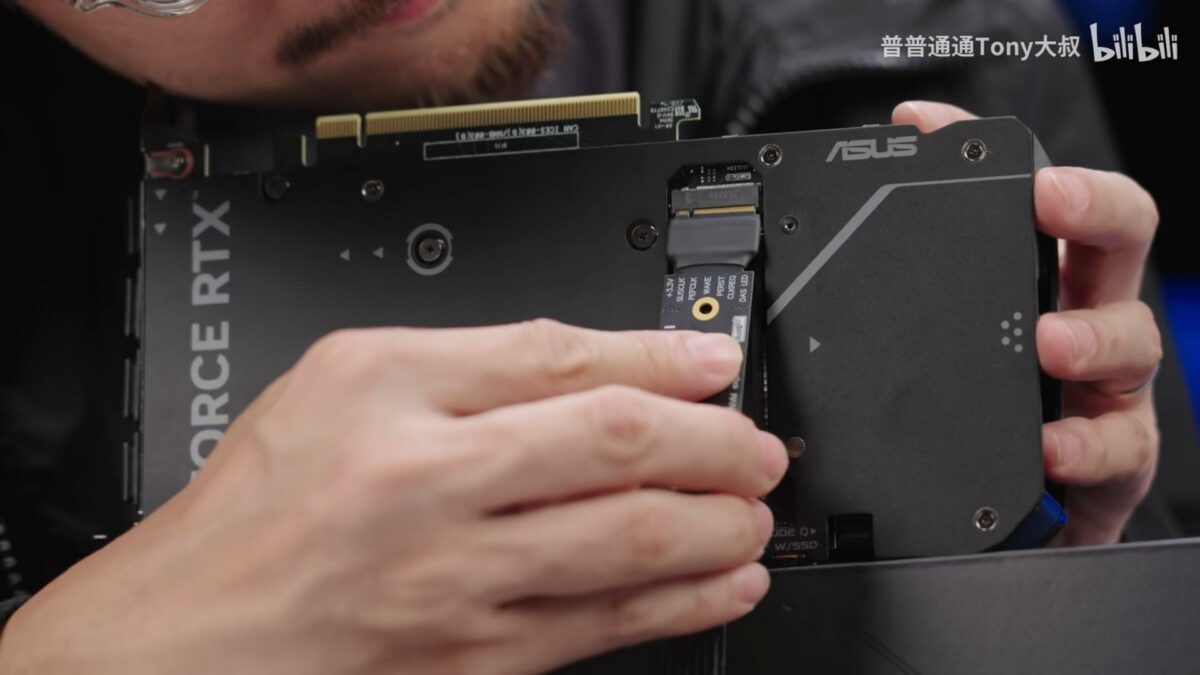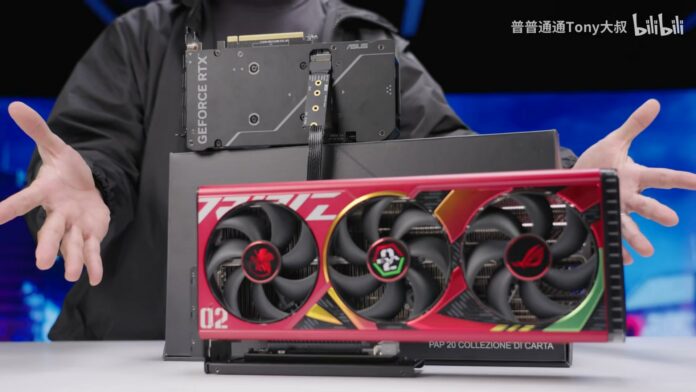Asus has showcased a graphics card contraption combining two unlikely Nvidia RTX graphics cards, an M.2 slot, and a PCIe adapter. The result is an RTX 4090 piggybacking over M.2, which in turn accesses the main PCIe slot via another RTX card.
To celebrate the launch of the innovative RTX 4060 Ti, Asus has demonstrated the capabilities of its unique feature on Bilibili (via WCCF Tech) – an extra M.2 slot located on the card’s rear. Carrying four PCIe Gen 5 lanes, this M.2 port has enough bandwidth to run modern graphics cards without losing much performance. It’s not the first time we’ve witnessed a GPU using an M.2 slot before, as it makes for a good small form factor solution. Still, it’s not something you’d expect.
Asus installed the RTX 4060 Ti Dual directly in the motherboard’s x16 PCIe slot. Then the brand connected an M.2 to PCIe x16 adapter to the RTX 4060 Ti’s M.2. The last piece of the puzzle is an ROG Strix GeForce RTX 4090 OC EVA-02 Edition graphics card hooked onto the end. Long story short, Frankenstein’s monster is alive and kicking at an average of 148fps in Cyberpunk 2077.

When you’re not trying weird stuff with this extra M.2 slot, you can use it for regular SSDs. The port can leverage the full might of a PCIe Gen 5 SSD, delivering upwards of 12GB/s read speed.
The best part, your RTX 4060 Ti Dual won’t lose any performance since it only uses eight PCIe lanes. This means that the M.2 slot simply runs on the untapped lanes. Asus technically could even add another M.2 slot if it wants to. And don’t worry about the GPU heating up the SSD. The results show temperatures around 50°C on a PCIe Gen 5 SSD, which is tame for the latest drives.

It’s an absurd bit of tech for most people, but great if you’re into mini PCs. As you may know, ITX motherboards like the B650I PG Lightning have very limited space to work with. Some use the board’s rear or stacked slots to add more. Still, M.2 slots are a commodity at the best of times, even on bigger alternatives. Having an extra SSD on your graphics card can definitely be handy.
As you can guess, any extra feature comes at a cost. In this case, it’s about $100 to $150. But if you really need that additional slot, then it’s a relatively small price to pay.

